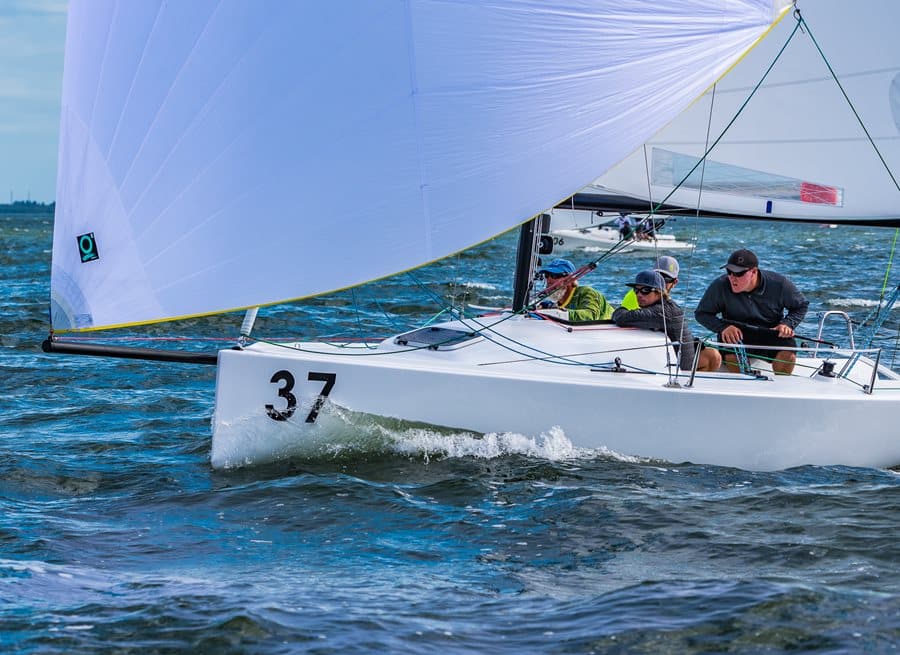
While engineering championship-winning sails starts with sitting at a computer playing with state-of-the-art software, it also involves hours on the water watching, observing, and testing. Already this year, I’ve been to Davis Island for the J/70 Winter Series and at Quantum Key West Race Week to look at J/70s and C&C 30s to get real-life knowledge and feedback, and I made some interesting observations. While my intent was to look at sail shapes and set-ups, something else caught my attention, and it may have a bigger impact in terms of speed around the race course!
Moving Weight
Many J/70 sailors – and possibly anybody with an attraction to small, planing boats – spent their early days in dinghies. For me, it was Lasers. I remember how much my weight moved fore-and-aft and side-to-side depending on sea state and wind velocity. In light air, I sat on the board with my legs to leeward, sheet between my legs, heeling the boat so maybe only a third of it was actually in the water. In heavy air, I was butt-back, hiking as hard as I could, moving weight as-needed to get the boat over the top of a wave. Once I was on the wave, it was back again, hoping the bow did not dig.
In the J/70 class at both Davis Island and Key West, we saw wind speeds from 6-25 knots, with moderate chop up to bigger waves. The polished teams at the front of the fleet moved their weight like I used to on a Laser. I am not talking about ooching or sudden weight movements – these were slow, controlled movements depending on heel angle or fore and aft trim. No doubt they had practiced and discussed their movements, as everybody on the boat worked the boat.
Big Gains Downwind
In these conditions, where the boats would come on and off a plane, there was too much weight aft for extended periods. This is also where I saw the biggest gains and the biggest losses occur. While the goal is to keep the rudder in the water, do not get stuck stern-down, bow-up waiting for the next puff. It’s a delicate dance in medium-to-heavy air as you certainly don’t want to end up bow-down and stern-up (or the next conversation will be how far to ease the asymmetrical halyard!).
Remember that the big gains are made downwind, especially in asymmetrical boats sailing at different angles. Going around the top mark is no time to relax.
In downwind mode in light air, the focus must be on heel angle, reducing wetted surface the best you can. Try to keep a consistent heel angle along with a fore and aft placement that gets the stern out of the water. To do this, practice getting the same people in the same places. In heavy air, the focus should be keeping the boat on a plane, so sail flat with an eye towards fore and aft trim.
In non-planing conditions, where you can go wing-on-wing, the focus should be reducing wetted surface, but with a twist – let gravity help fill the sail. Work on heeling the boat to weather (same side as the asymmetrical) and keep the heel consistent so the sail doesn’t bounce around.
Always be Racing
While the tendency is to breathe once around the top mark, you want to work harder on your downwind legs. Move the weight as needed and work together as a team. The payoff will be a lot greater than any gains that could be made upwind!









